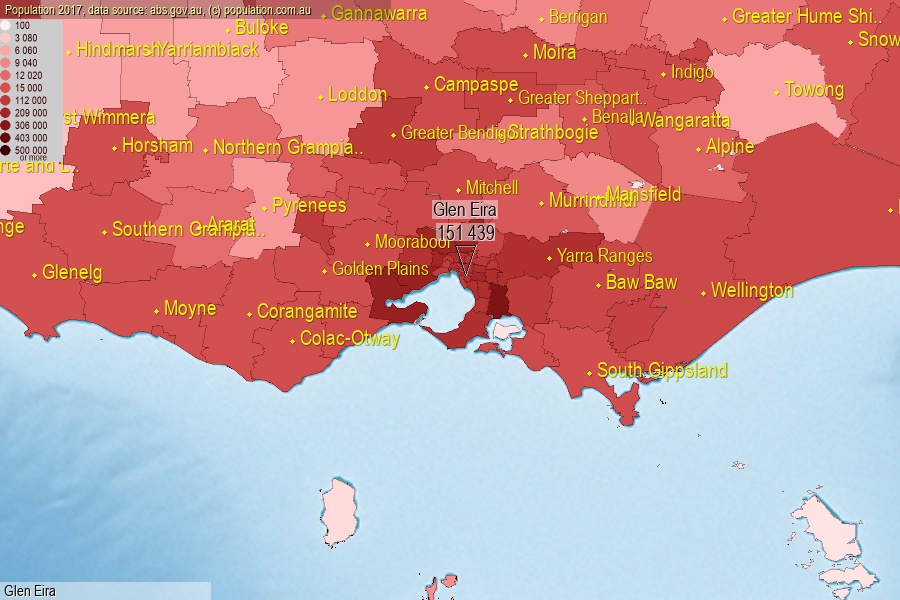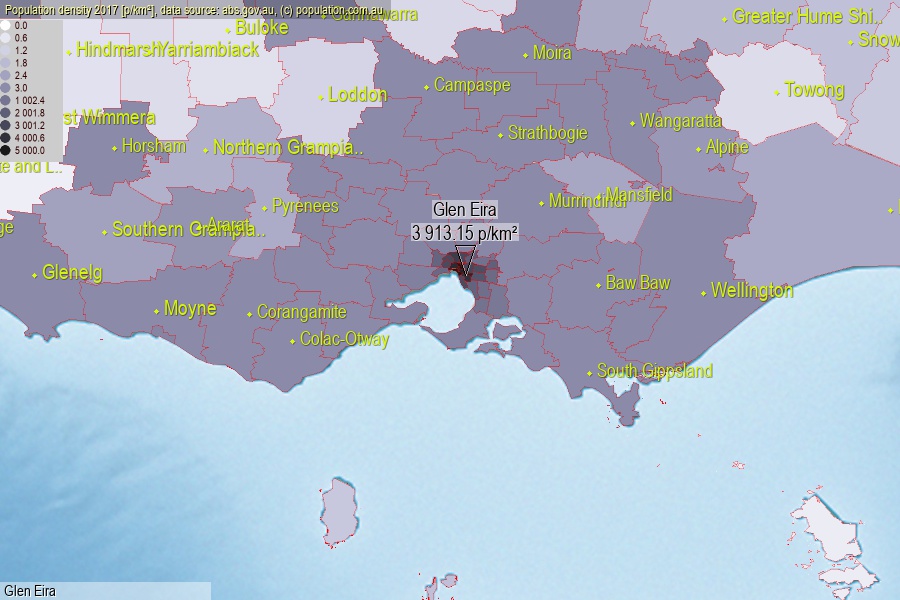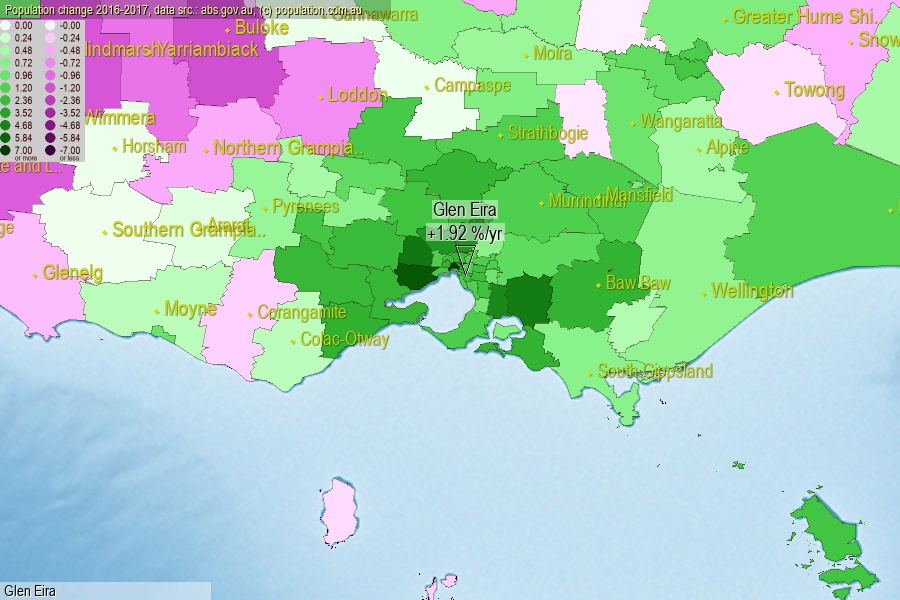 population.com.au
population.com.auLast official estimated population of Glen Eira City (as Local Government Area) was 151 439 people (on 2017-06-30)[2]. This was 0.61% of total Australian population and 2.355% of VIC population. Area of Glen Eira is 38.70 km², in this year population density was 3 913.15 p/km² . If population growth rate would be same as in period 2016-2017 (+1.92%/yr), Glen Eira population in 2025 would be 176 355. [0]



Click to enlarge. Glen Eira is located in the center of the images.
Population [people], population density [p./km²] and population change [%/year] [2]
[1996-2001] +0.34 %/Y
[2001-2002] +0.70 %/Y
[2002-2003] +0.50 %/Y
[2003-2004] +0.99 %/Y
[2004-2005] +1.16 %/Y
[2005-2006] +1.57 %/Y
[2006-2007] +1.60 %/Y
[2007-2008] +1.82 %/Y
[2008-2009] +1.89 %/Y
[2009-2010] +0.81 %/Y
[2010-2011] +0.47 %/Y
[2011-2012] +1.43 %/Y
[2012-2013] +1.54 %/Y
[2013-2014] +1.72 %/Y
[2014-2015] +1.55 %/Y
[2015-2016] +1.82 %/Y
[2016-2017] +1.92 %/Y
[0] Calculated with linear interpolation from officially estimated population
[1] Read more about LGA and Australian Statistical Geography Standard (ASGS) on abs.gov.au
[2] Population data from Australian Bureau of Statistics (Population and density: 2017; change: 2016-2017)
[3] Digital Boundaries: Australian Statistical Geography Standard (ASGS) 2016.